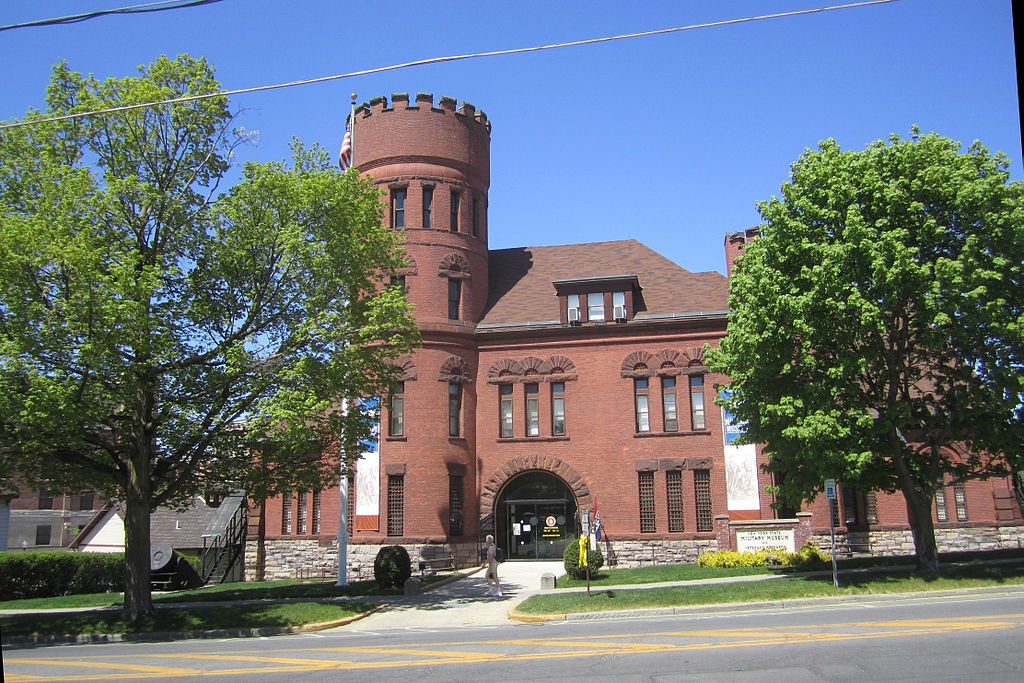#6605. Monumental Brick Façade with Romanesque Motifs and Tower Elements
The building presented showcases a striking example of Romanesque Revival brick architecture. The massive red brick façade creates an impression of solidity and monumentality. Particularly notable is the round tower with crenellated top on the left side of the building, giving the structure a resemblance to a small castle.
The façade is organized symmetrically, with an arched central entrance framed by stone masonry. Above the entrance are decorative arched elements that are repeated in the design of the second-floor windows. The first floor is distinguished by a stone base, creating a contrast with the red-brick main portion of the building.
The windows feature characteristic arched tops with fan-shaped stone details above them, typical of Romanesque Revival. The building has a gabled roof with small dormer windows. The right side of the building balances the composition with a smaller corner tower.
The building is harmoniously integrated into the surrounding landscape, framed by mature trees that emphasize its historical significance and monumentality. This architectural style is characteristic of American public buildings from the late 19th to early 20th century, often used as libraries, town halls, or educational institutions.
